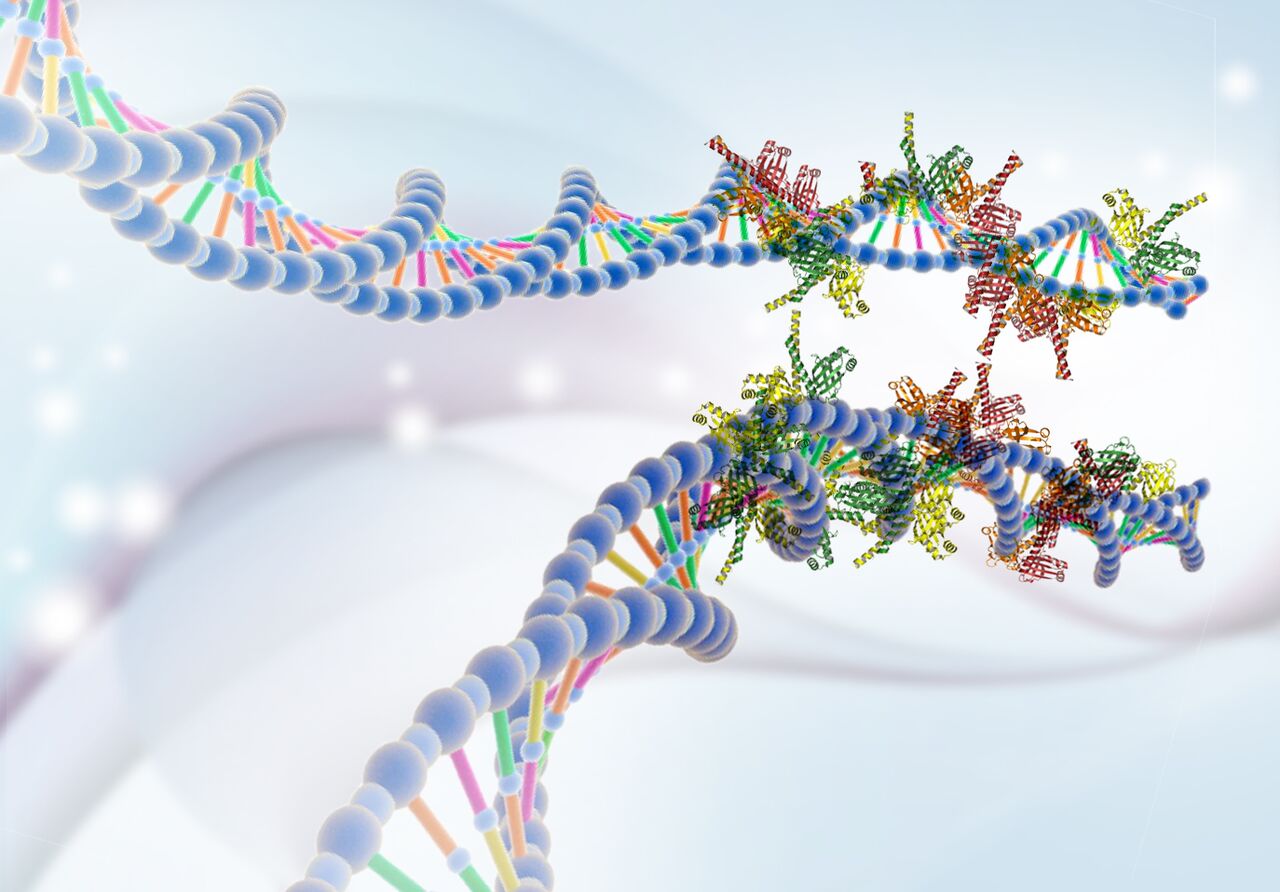Manipulating Individual DNA Molecules

Complete the form below to unlock access to ALL audio articles.

The research team lead by Dr Mauro Modesti at the Centre for Cancer Research, Marseilles (CRCM), focuses on the study and understanding of the molecular mechanisms that assure DNA repair and the maintain of genome integrity in human cells. Failure to detect and/or repair of DNA genotoxic lesions, such as double-strand breaks, can lead to the appearance of mutations, genomic instability and, eventually, cancer.
In order to better understand the DNA-repair processes, Dr Modesti's team exploits and merges different techniques going from classical ensemble biochemical assays and cell biology to the use of “single-molecule” biophysical methods that allow visualization and monitoring of the dynamic behavior of repair proteins acting on DNA molecules. Given that tumor treatments by radiotherapy or chemotherapy rely on the induction of DNA double-strand breaks in cancer cells in order to kill them, targeting the factors involved in DNA repair is thus a sensible strategy to improve cancer therapy but still necessitates a deeper understanding at the fundamental level of the DNA repair mechanisms, which is the goal of the research group.
The group uses JPK's NanoTracker™ 2 optical tweezers system as a unique tool that enables the grabbing and manipulation of individual DNA molecules. This way, the researchers of the group are able to hold the DNA, like a wire between two handles, and study the action of different DNA-repair proteins. Optical tweezers are used to “feel” the mechanical action of the proteins on the DNA and are combined with fluorescence imaging in order to observe, in real time, the position of the (fluorescently labelled) proteins as they move along the DNA and interact between them and with the DNA substrate. The group has recently developed an assay where two DNA molecules are captured and used to test whether and how different DNA-repair complexes are able to bring and maintain together the two DNA molecules. This mimics the situation in which the DNA is broken in two pieces and the two pieces need to be held together and then reconnected, as illustrated in the schematics below.
Describing the system and its role in the group, research engineer, Davide Normanno, takes up the story. “We use the JPK NanoTracker™ 2 optical tweezers system in combination with a custom-built single-molecule epi-fluorescence microscope and a microfluidics system. This way we can catch and manipulate the DNA while precisely controlling the environmental conditions and observing the activity on the DNA of fluorescently labelled proteins. This enables us to perform, follow and study complex biochemical reactions in a highly controlled way. We especially like the software to control all the instrumentation, which is a crucial aspect to be actually able to perform such complicate experiments.
"Also, we appreciate the timely and positive interaction with all JPK engineers, application specialists, and software developers for their help and support when we have some issue or questions. Their efforts in continuing to implement and add new custom functionalities in the software enables us to really have fun and, hopefully, be creative and innovative in the use of the NanoTracker™ system. We also enjoy the versatility of the (new AOD-based) trap multiplexing, which gives us the possibility to have as many traps as we want, and more traps means more fun for us!”
Source:
Story from JPK Instruments. Please note: The content above may have been edited to ensure it is in keeping with Technology Networks’ style and length guidelines.



